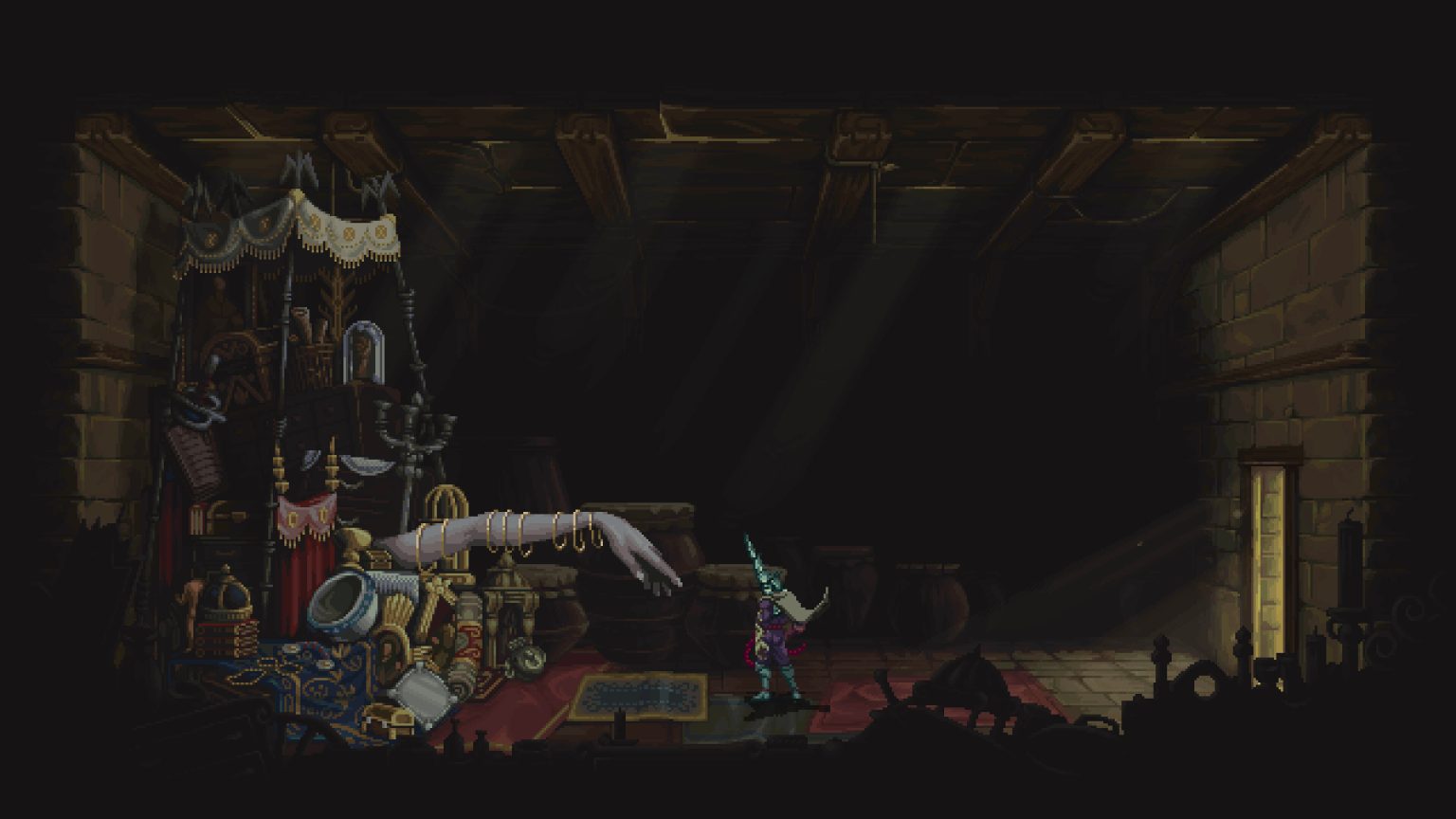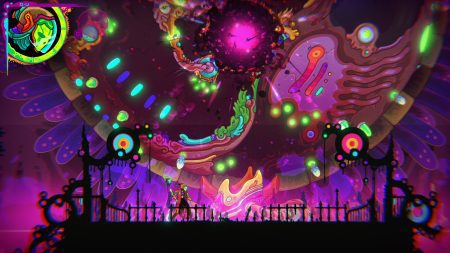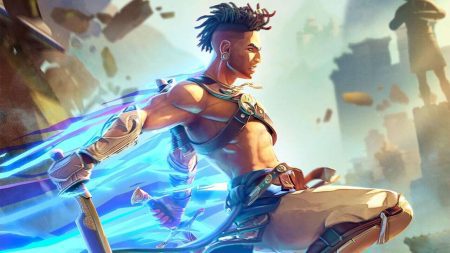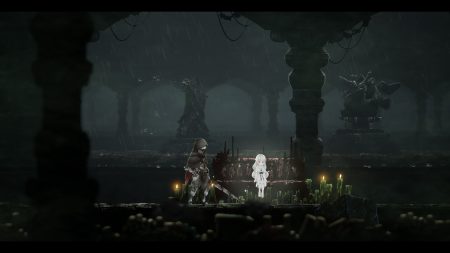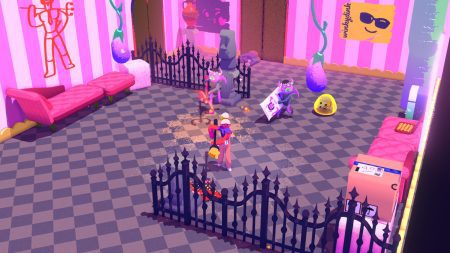Blasphemous 2 is the best Metroidvania I’ve played in years.
In a genre saturated with 2D pixel art tributes, Team17‘s Blasphemous 2, released on August 24, sets itself apart from the rest. Its trinity of addictive combat, expansive lore and storytelling, and gorgeous art design makes it a king among pretenders in the Metroidvania space.
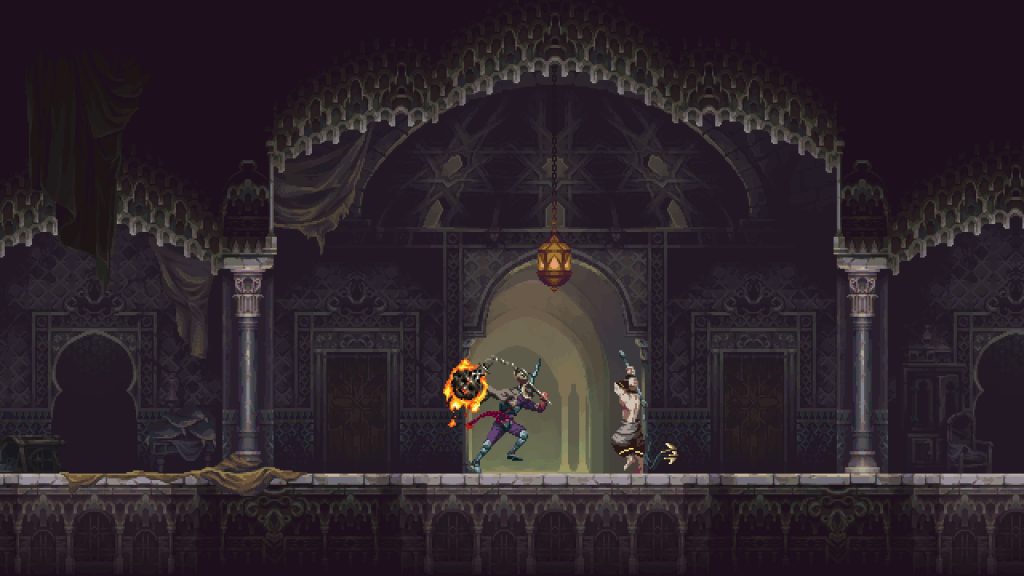
An Epic Sophomore Quest
Blasphemous 2’s story picks up long after the ending of the original Blasphemous. You take the role of The Penitent One, resurrected with newfound tree-like powers and outfitted with your signature pointy helmet and badass garb. From there, you set out on a quest to figure out A) what the hell happened to the world you once knew, and B) what the hell The Miracle—who’s basically god and the source of your tree powers—wants.
I found the story, art, and game design—which explore the themes of sin, duality, guilt, repentance, and religious zealotry—to be equally refreshing and repulsive. It was like drinking communion while walking through a Spanish-Catholic church filled with gory, medieval-era commissioned art depicting the bloody crucifixion of Jesus Christ. The game is beautiful, and even the more disturbing parts are somehow beautiful too, albeit in a darker, more somber way.
The world you explore is enormous and equal parts beautiful and horrific. The architecture is fantastical and steeped in religious zealotry—a stark contrast to the game’s inhabitants, which are mutilated by gut-wrenching afflictions. It’s a world of blessings and dark fantasy nightmares, accompanied by haunting orchestral arrangements. Each part of Blasphemous 2’s interconnected map blew me away with its sheer variety. One level, an upside-down castle oozing wax, particularly impressed me.
All of this is punctuated by the game’s meticulously detailed stellar 2D sprite designs. These designs exceeded what I’ve come to expect from 2D art and animation, especially in a Metroidvania. NPCs have strange, uncanny animations, and enemies executed by your hand die in explosions of animated gore and fire. This game sets the bar for artistry far into the heavens.
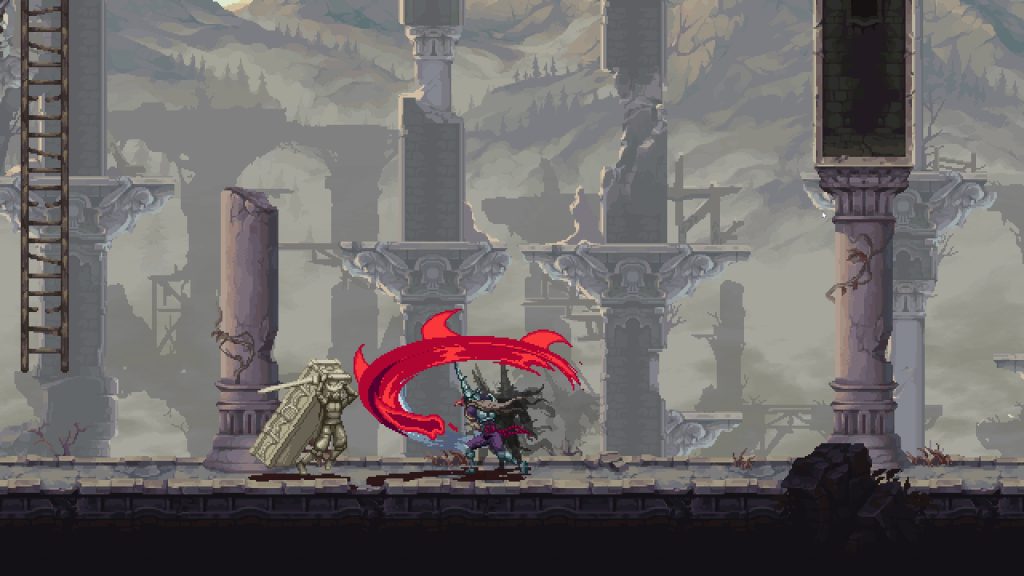
Letting Loose on Some Demons
The first choice you make in Blasphemous 2 is deciding which weapon to start the game with. You have three options: the hard-hitting but slow Veredicto (a chained club), the lighting-fast but weaker Sarmiento & Centella (a pair of rapiers), and the balanced Ruego Al Alba (a sword). All of them look badass.
Each weapon has its strengths and weaknesses, but, honestly, you can’t go wrong with any of them. You can test them on a nearby dummy, and the game gives you access to the other two weapons pretty quickly as you explore the world.
Sometimes, in life, when I’m faced with multiple choices between good things, I panic and hesitate. Naturally, I did here too. But since I just finished my run of Blasphemous 1—in which you’re only given a sword—in preparation for this review, I was ready to mix things up.
So, I grabbed the hulking Veredicto first, and it stayed my go-to companion throughout most of the game. It hits hard, and bashing every monstrosity that tries to skewer you feels brutally satisfying. Once I got all three, however, that’s when the fun really started.
Blasphemous 2 lets you quickly swap between weapons during gameplay, which gives combat a Devil May Cry-like feel. In typical Metroidvania fashion, I also unlocked additional mobility upgrades which let me style on enemies how I saw fit. Before long, I was extending combos through jump cancels, executing air dashes, and switching weapons on the fly. This mobility comes in especially handy during boss fights, as the screen starts to fill with lasers, lightning, explosions, and other projectiles.
I love a game that gives me freedom during combat and waves of enemies to experiment on. Blasphemous 2 gave me both—a sign the developers are confident with their game and their combat system. I wouldn’t be surprised if people started uploading combo videos in the coming weeks and months.
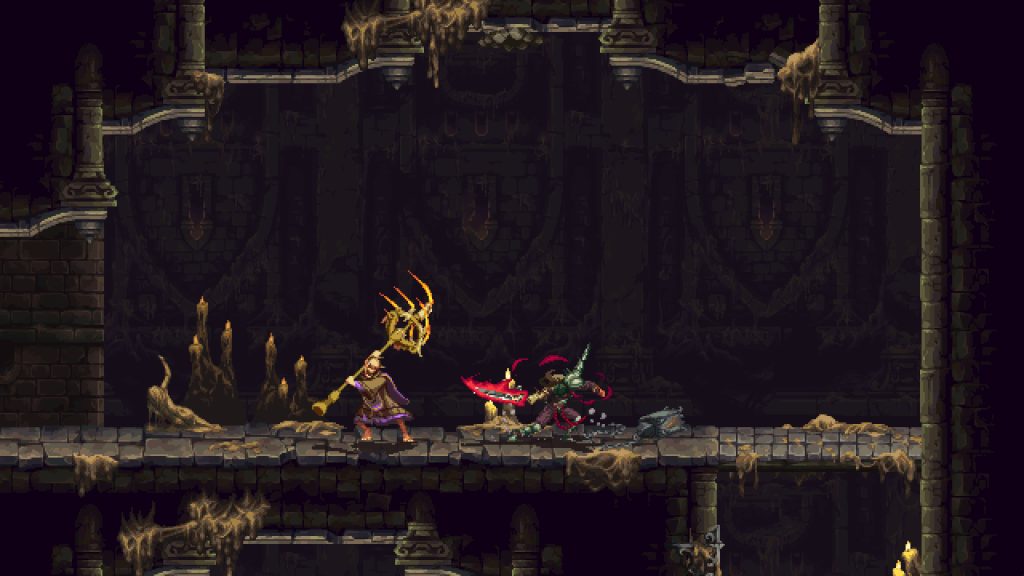
Embracing the Pain
Blasphemous 2 is more than just a Metroidvania. It retains several Souls-like elements of Blasphemous, including its health flasks, magic meter, item-based lore and storytelling, and bonfire-inspired save points.
Then, there’s the difficulty. Blasphemous 2 is a tough, demanding game, but it rewards your exploration and constant demon-slaying with Martyrdom points, which you use to upgrade your weapons, and Tears of Atonement, the currency you use to purchase items from merchants.
It’s a simple RPG system that’s made complex by the various equipable Rosary Beads and Relics you collect throughout the world. Each of these has different effects on your stats including element resistance, weapon damage, and death penalty reductions. I mostly stuck to damage buffs, but as the game got more difficult—with enemies and bosses using different kinds of elemental attacks—I had to pay closer attention.

A Wealth of Lore—For Better or Worse
The game’s world-building is deep. To fully comprehend the story, you’ll have to read every single item’s lore—or just wait for YouTubers like Smoughtown to upload lore videos if you’re lazy like me.
I have a love-hate relationship with this form of storytelling. As someone who prefers to have straightforward stories play out through cutscenes and gameplay, reading the lore of each item can feel tedious.
The story also becomes obscured at times. Blasphemous 2 lacks a clear indicator of where you should begin diving through lore, which creates the potential for large gaps in storytelling if you don’t find all of the items and NPCs (some of which are hidden behind secret walls). Certain quests are missable, even, though the items you get from them can be bought later.
Thankfully, Blasphemous 2 makes up for its opacity with its compelling world. The game and its design were so good that I compulsively checked every corner and whacked every random wall I came across, desperate for more items and information.
By the end of my 20-hour run, I found almost all the items and collectibles scattered throughout the game’s massive map. Sadly, without collecting all the game’s necessary items, I unlocked the standard ending, as opposed to the “true” ending. The outcome was fine, but it ultimately left me wanting more. I’m already excited to go back and hunt down everything I missed.
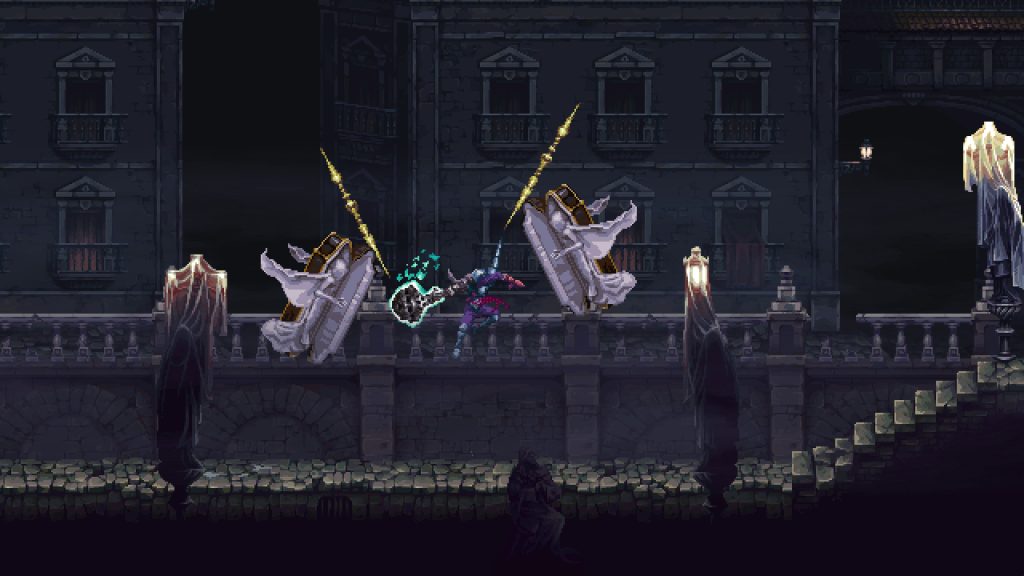
Final Thoughts
If you’re a fan of 2D Metroidvania and Souls-like games, Blasphemous 2 is a must-play. It has the best of both worlds while crafting a unique identity that expands and improves on the original Blasphemous in every way.
If you just want a damn good side-scrolling action game, it’s a must-play. If you’re a fan of dark fantasy, Spanish art and architecture, religious commentary, or anything macabre, it’s also a must-play.
I’ll keep this simple. It’s a must-play.
Score: 9.5
Donovan is a lifelong gamer with a love for fast-paced, single-player action games—especially Devil May Cry, Metroidvanias, indies, and action RPGs. He’s also an “advanced scrub” at fighting games and will play just about anything fun. Donovan is passionate about seeing more diverse characters and creators in the industry—or at least better hair options for Black people. With over a decade in journalism, he joined The Punished Backlog in 2023 to write more about what he loves. Follow him on Twitter and Instagram @dono_harrell.


